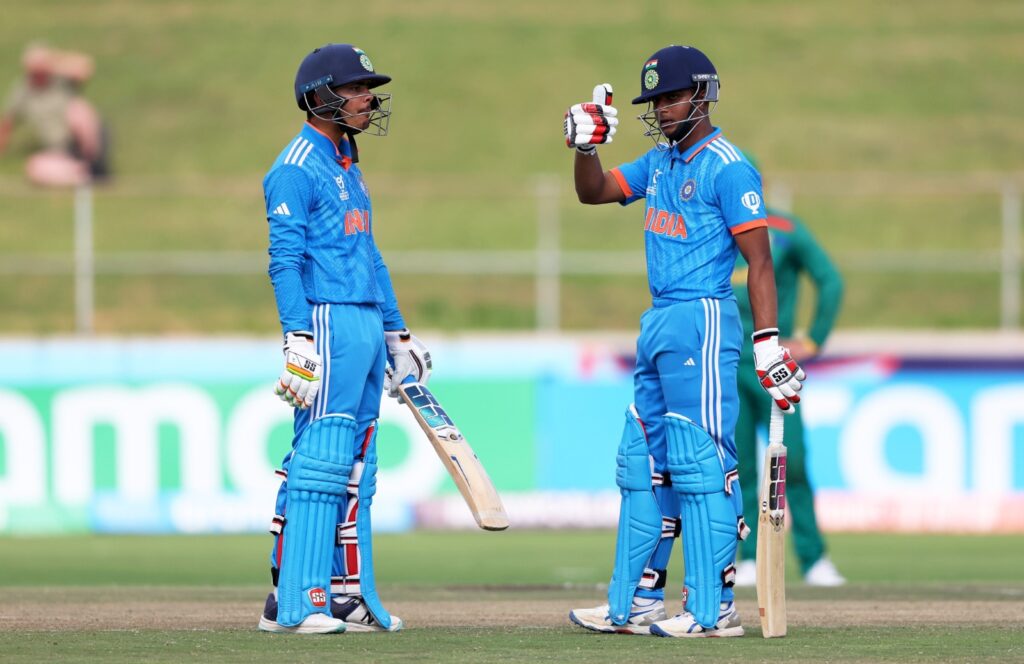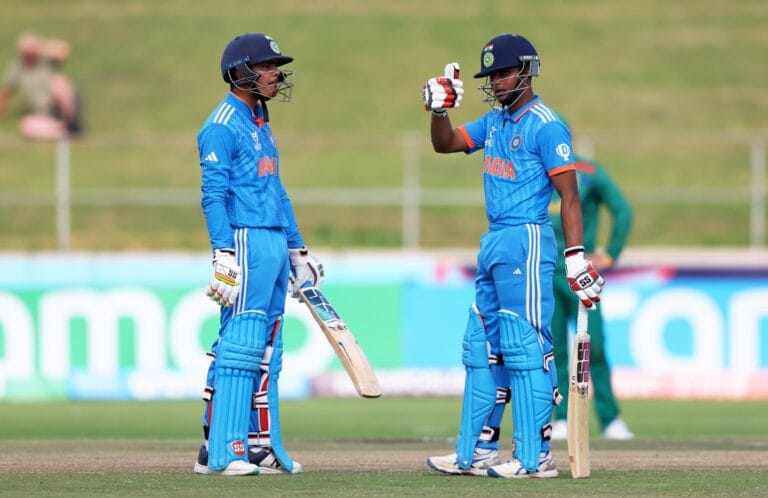
Sanjay Dhas, Sachin Dhas’ father, once observed that the prodigy’s willow was examined by the authorities at a T20 event in Pune after he came into limelight for his six-hitting prowess. As Dhas went about collecting runs in the just-concluded Under-19 World Cup in South Africa, one could understand why and how his batting prowess left many in a state of awe and shock.
Dhas was the fifth-highest run-getter in the tournament but the manner in which he went about scoring them suggested he might go on to achieve bigger things. His game-breaking 96 against South Africa in the semi-final in Benoni served as an essence of not just his skill-set, but also how he responded to pressure situations.
Kwena Maphaka and Tristan Luus had breathed fire upfront to leave India in deep trouble at 32 for 4 in the 12th over. Enter Dhas. With near-perfect co-ordination of his hands and feet, the middle-order bat seemed to have that little bit of extra time while picking the length as he rode the bounce to cut, pull and drive the South African bowlers.
In fact, he transferred the pressure right back on to the South African bowlers. And his attacking instincts also allowed Uday Saharan, his batting partner, to play his game of anchoring the innings. Unfortunately, Dhas fell agonisingly short of a well-deserved hundred, but by then he had done his job of laying down the framework for India to chase down the target.
Dhas, however, couldn’t replicate his heroics in the summit clash against Australia. He ended the tournament with 303 runs. Perhaps Dhas would have added more runs to his tally if the Indian coaching staff had shown some foresight. It seemed quite evident right through the tournament that India were wasting one of their best talents by asking him to bat at No. 5, 6 or even 7.
Ideally, your best player should bat in top 3 in limited-overs cricket. Whatever was the reasoning behind the Indian think-tank’s questionable move, Dhas, who was named after the legendary Sachin Tendulkar, came across as India’s best player of the tournament.
For the Latests Sports News: Click Here
India’s noteworthy campaign wasn’t just about one cricketer. Musheer Khan accumulated two hundreds and a fifty. Musheer seems to blend the batting styles of Sarfaraz, his elder brother, and Suryakumar Yadav. He is also a diligent left-arm spinner. Raj Limbani, the pace bowler, scalped 11 wickets. In the final, with a judicious mix of different lengths, he kept the batters on their toes. Somewhere, it indicated that Limbani has the required fast-bowling mindset to succeed at a higher level.
Saharan, the captain, topped the batting charts with 397 runs; his 81 against South Africa Under-19 turned out to be the highlight of his impressive campaign. There is a school of thought that Saharan needs to improve his ball-striking skills, but that is just a minor criticism.
Last, but not the least, there was Saumy Pandey. The slow left-arm orthodox bowler took 18 wickets in the tournament at a stunning average of just over 10. He picked up three four-fors – one each against Nepal, New Zealand and Bangladesh. Just a cursory glance at Pandey’s bowling, and you could notice some resemblances with Ravindra Jadeja’s method. With a repeatable action, he can get a few to turn at pace and then for the straighter one to befuddle the opponent. He also gets drift, creating that little bit of illusion in the mind of the batter.
The aforementioned players have the required traits to represent India. It all comes down to whether they can sharpen the rough edges of their respective games and fulfill their burgeoning potential.
Tea-ing off With RevSportz || LIVE https://t.co/KvXLR9cG5M
— Boria Majumdar (@BoriaMajumdar) February 12, 2024




